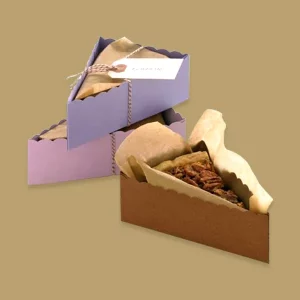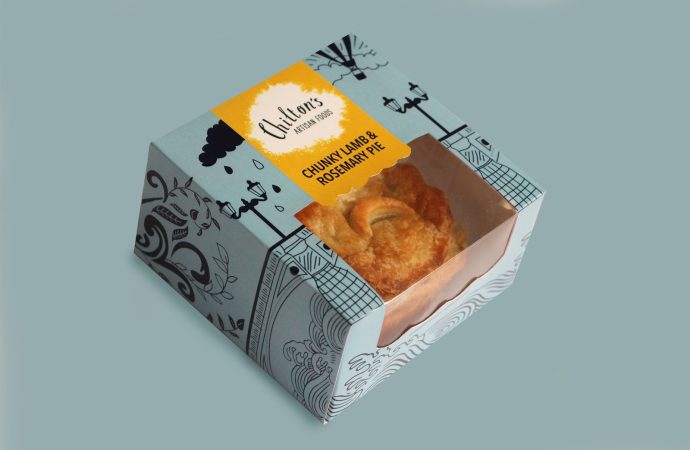Introduction The pie packaging market has experienced steady growth in recent years due to increasing demand for bakery products and evolving consumer preferences for convenient and eco-friendly packaging. As pies remain a popular dessert and snack option worldwide, the need for attractive, functional, and sustainable packaging has expanded significantly. From bakery chains to home bakers,
Introduction
The pie packaging market has experienced steady growth in recent years due to increasing demand for bakery products and evolving consumer preferences for convenient and eco-friendly packaging. As pies remain a popular dessert and snack option worldwide, the need for attractive, functional, and sustainable packaging has expanded significantly. From bakery chains to home bakers, businesses are looking for innovative solutions that keep pies fresh, enhance their presentation, and reduce environmental impact.
This article explores the current market size, share, strategies, key manufacturers, emerging trends, and a detailed SWOT analysis for the pie packaging industry leading up to 2032.
Rise of the Pie Packaging Market
Demand for ready-to-eat and takeaway desserts has grown, and pies are a big part of that trend. More bakeries, cafes, and grocery chains now sell pies in single-serve and family sizes. Food delivery apps also push sellers to use packaging that travels well and looks good on arrival. At the same time, brands want eco-friendlier options, so suppliers are shifting from plain plastic to paperboard and compostable materials. All of this has lifted interest and investment in better pie boxes, clamshells, and trays as we move toward 2032.
Benefits of Better Pie Packaging
Good packaging keeps pies safe, fresh, and attractive. Sturdy bases and clear lids protect crusts and fillings from damage in transit. Venting and grease-resistant linings help maintain texture and reduce mess. Smart designs stack well, save shelf space, and make labeling easy. For sellers, packaging doubles as low-cost marketing—logos, colors, and window panels can boost impulse buys without extra ads.
Role of Packaging Across the Value Chain
Packaging connects the baker’s oven to the shopper’s table. In stores, it supports display, pricing, and quick checkout. In delivery, it prevents spills, discourages tampering, and keeps slices intact. For regulators and consumers, it carries key info—ingredients, allergens, and use-by dates. For manufacturers, materials and formats must run smoothly on filling lines, sealers, and labelers to keep costs down and quality steady.
Market Overview
Pie packaging serves both a protective and promotional purpose. It keeps pies intact during transportation, maintains freshness, and provides a platform for branding. The market includes packaging materials like cardboard boxes, plastic containers, and biodegradable options, each serving different business needs.
The industry’s growth is driven by:
- Rising popularity of bakery products in retail and online channels.
- Increased consumer interest in eco-friendly and recyclable packaging.
- Innovation in designs for improved convenience and visual appeal.
- Growth of quick-service restaurants and home delivery services.
Market Size and Share
The global pie packaging market is projected to witness strong growth between 2024 and 2032. North America currently holds a significant share due to a well-established bakery culture and high demand for premium packaging. Europe follows closely, with sustainable packaging leading the trend. Asia-Pacific is emerging as a high-growth region, fueled by increasing urbanization, rising disposable incomes, and the expansion of the food delivery sector.
Online food ordering platforms are also influencing the market as they demand packaging that can withstand transportation without compromising the product’s quality.
Key Growth Strategies in the Pie Packaging Market

Image by: Yandex.com
Manufacturers and suppliers are adopting various strategies to remain competitive and meet changing customer needs:
1. Sustainable Materials
Eco-friendly solutions such as biodegradable plastics, compostable cardboard, and recycled paperboard are in demand. Companies are investing in R&D to create packaging that meets environmental regulations without sacrificing durability.
2. Customization and Branding
Custom-printed pie boxes help bakeries and restaurants promote their brand identity. Unique shapes, colors, and logo printing not only protect the pie but also enhance customer engagement.
3. Innovation in Design
Easy-to-carry handles, transparent windows to showcase the pie, and compartmentalized packaging for multiple servings are attracting more customers.
4. Partnerships with Foodservice Providers
Collaborations between packaging companies and large food chains or e-commerce food delivery services are expanding the market reach.
5. Technology Integration
Digital printing technology allows faster production of customized packaging, catering to seasonal promotions and limited-edition product launches.
Key Manufacturers in the Pie Packaging Market
Some of the leading companies in the global pie packaging market include:
- WestRock Company: Known for sustainable paper-based packaging solutions.
- International Paper: Offers customizable pie packaging products.
- Huhtamaki: Specializes in eco-friendly food packaging.
- Smurfit Kappa: Provides innovative corrugated and paperboard packaging.
- Genpak LLC: Focuses on plastic-based pie containers and trays.
- Eco-Products, Inc.: Offers compostable and biodegradable packaging.
- Graphic Packaging International: Delivers attractive designs for food packaging.
These companies focus on both mass production and customized packaging solutions to meet diverse business needs.
Trends Shaping the Pie Packaging Market
The pie packaging industry is evolving rapidly, influenced by changing consumer behavior and environmental policies. Key trends include:
- Shift Toward Sustainable Packaging: As awareness of environmental issues grows, more customers are choosing brands that use recyclable or biodegradable packaging materials.
- Minimalist and Modern Designs: Clean designs with minimal printing, natural colors, and a focus on the product rather than flashy graphics are becoming popular.
- E-commerce-Friendly Packaging: With more pies being sold online, packaging is being designed to handle longer transit times while preserving freshness.
- Transparent Windows: Customers enjoy seeing the product before purchase, making transparent panels in packaging a popular feature.
- Smart Packaging Solutions: QR codes, freshness indicators, and other interactive elements are being added to packaging to enhance the customer experience.
SWOT Analysis of the Pie Packaging Market
1. Strengths
- High demand for bakery products ensures a steady market.
- Diverse materials and designs to cater to various customer segments.
- Opportunities for branding through customized packaging.
2. Weaknesses
- High production costs for sustainable packaging solutions.
- Dependence on raw material prices, which can fluctuate.
- Limited awareness among small businesses about advanced packaging options.
3. Opportunities
- Expanding food delivery services globally.
- Growth in emerging markets with rising disposable incomes.
- Technological advancements in printing and material science.
Threats
- Strict environmental regulations increasing compliance costs.
- Competition from alternative food packaging solutions.
- Economic downturns affecting consumer spending on premium packaging.
Regional Insights
- North America: Strong bakery industry, early adoption of eco-friendly materials, and demand for innovative designs.
- Europe: Stringent sustainability regulations driving the use of compostable and recyclable materials.
- Asia-Pacific: Rapid urbanization, growing food delivery services, and increasing popularity of Western-style desserts.
- Latin America & Middle East: Expanding bakery and café culture, opening new opportunities for packaging manufacturers.
Future Outlook to 2032
By 2032, the pie packaging market is expected to be more sustainable, technologically advanced, and customer-centric. Manufacturers will likely invest heavily in biodegradable and compostable materials, while also adopting automation in production for greater efficiency.
Customizable and e-commerce-ready packaging will dominate, meeting the dual needs of presentation and protection. Additionally, collaborations between packaging companies, bakeries, and online delivery platforms will shape the future competitive landscape.
Conclusion
The pie packaging market is on a steady growth path, fueled by rising demand for bakery products, the shift toward sustainable solutions, and the need for functional yet visually appealing designs. Key manufacturers are focusing on innovation, branding, and eco-friendly materials to capture market share. As e-commerce continues to influence food delivery, packaging that offers both durability and presentation will be essential. Looking ahead to 2032, the industry is expected to be more adaptable, environmentally responsible, and driven by consumer preferences, creating new opportunities for businesses at every level of the supply chain.
















